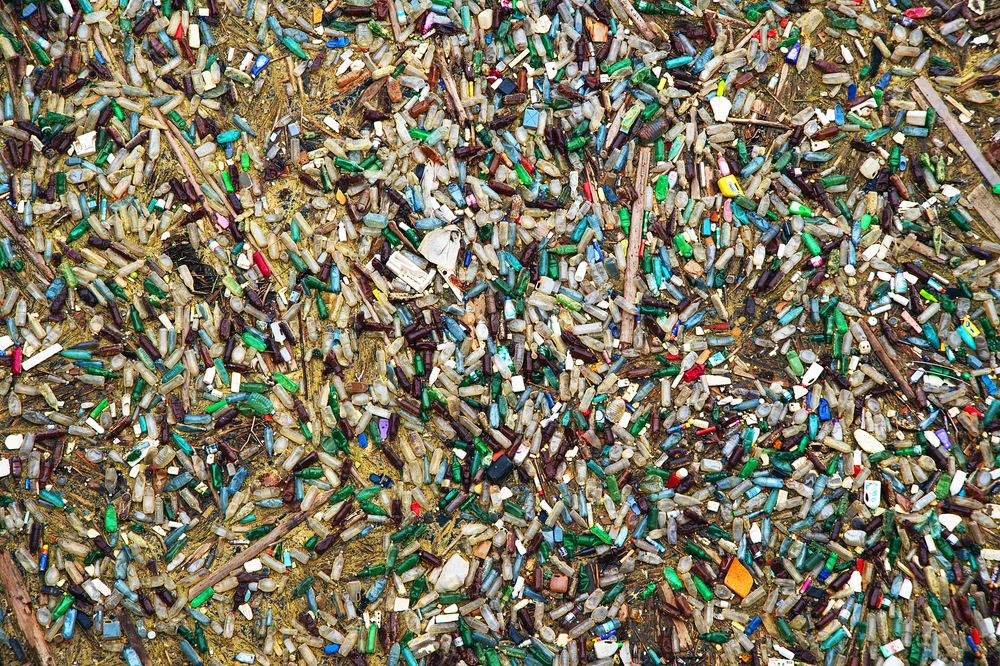These Three Plastic Recycling Myths Will Blow Your Mind
By Christopher Thompson
Most likely, when you toss your plastic trash into a recycle bin you believe you’re doing the right thing. You think your plastic waste gets magically whisked away to a recycle center where it will be transformed back into more useful plastic items.
Recycling feels like a harmless way to get rid of stuff, a way to prevent your plastic cup or bag or food container from the landfill where it might sit for decades before leaching toxins into the groundwater. But these pleasant little recycling sagas mostly aren’t true and trusting them is a mistake.
Globally, only 10-15% of plastic currently gets recycled. That means 85-90% of it either ends up in the landfill or littered throughout the environment. The World Economic Forum estimates that as much as 30% of plastic leaks out of the collection system and is unaccounted for, which means it’s scattered in your local waterway or in the ocean. The fantasy that the plastic we trustingly put in the recycle bin actually gets recycled and re-used again is just that, a fantasy.
Since sunlight is the best disinfectant, shedding light on recycling might dispel the myths and help you make better decisions.
Myth number 1: You might think your single-use plastic water bottle goes off to be shredded, melted, ground up into tiny plastic pellets and these good-as-new plastic pellets are re-made into other useful items. Yay, right? Nope.
While it is true that your plastic water bottle is one of the few types of plastic that can be recycled, the quality of the plastic degrades once it’s been used. Recycled plastic is generally down-cycled into lower quality, lesser value plastic.
This means two things. First, unlike metal, which can be melted down and reused over and over and over again, plastic can – at most – only be recycled one time. For example, your water bottle doesn’t get turned back into a new water bottle. Instead, it might become something like a non-recyclable carpet or a poly-cotton fabric such as fleece that’s also non-recyclable. So plastic only gets recycled the one time and can’t be recycled again.
Second, because the quality of recycled plastic is lower, virgin plastic pellets must be added to the recycled pellets to create the next new plastic thing. Because of contaminants, there’s a limit to how much recycled plastic can be used in food grade containers. To make new yoghurt containers from recycled plastic, for example, only a portion of the plastic comes from pellets that have been recycled and the rest is new virgin plastic.
This means that there will always be more and more new virgin plastic mixed in with the recycling. And more and more plastic means only one thing: It means more plastic.
Metal, on the other hand, is not only much easier to melt down and repurpose, it can also be reused over and over again. So if you want to stop the endless flow of plastic into our environment, then break out your vintage metal lunch box, carry your metal water bottle and go for those cans of beans and tuna at the grocery store.
Myth number 2: You can try tossing those fun bright orange, purple or blue containers of laundry detergent and shampoo into the recycling when they’re empty. But, guess what? Most likely they won’t be recycled.
Intense or dark colored plastic is difficult if not impossible to reuse. Think of mixing paint. The darker the paint is, the more difficult to change the color to a new color. Only white or natural plastic is of high enough value to bother putting it through the recycling process. Instead of being recycled, your bright colorful plastic might sit bundled up at your local recycle center for a few days before being trucked off to the landfill.
Keep this in mind while shopping and if you have to use plastic, always choose items in white or clear containers. Also remember that black plastic is the most difficult color to recycle, so if you forget to bring your own re-useable coffee cup, pick the white colored to-go lid.
Myth number 3: Single-use plates and utensils labeled “biodegradable” must be a sustainable alternative, right? Well, no. The the term “biodegradable” is a misrepresentation.
Many if not most of those “biodegradable” plates and utensils sold as sustainable alternatives to single-use plastic aren’t really compostable or recyclable. The idea behind bio-plastic products is that they’re supposed to break down. But truthfully, they only break down in a very high heat industrial composting facility. For us regular people with backyard compost bins, these plates and utensils will not decompose.
If these products end up in a lake, river or ocean, they’re basically the same as plastic. What’s more, if you do put products labeled biodegradable or compostable into the recycle bin, they won’t be recycled because they aren’t recyclable.
Recyclable commodities are part of a complex global market that is influenced by impurities in the products and market demand. While corporations are responsible for designing these single use products meant to be tossed, all of us are paying for these “conveniences” both financially and environmentally. As consumers, we have the power to make better choices about our purchases because ultimately, this disposable, single use lifestyle is unsustainable.

